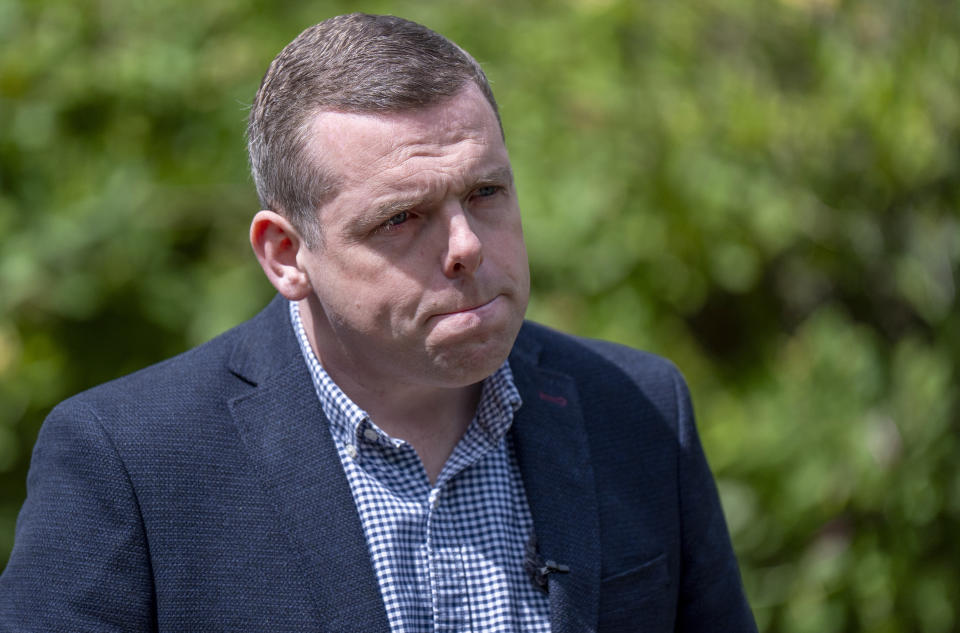SNP electoral dominance in Scotland under threat from resurgent Labour
Boundary changes have already redrawn Scotland’s electoral map – but voters may inflict far greater changes on the political landscape north of the border come polling day.
While Scotland is losing two seats as part of a redrawing of constituencies across the UK – taking the number of MPs the country will send to the Commons from 59 to 57 – pollsters are already predicting substantial losses for the SNP.
That could make it a tough night for John Swinney, who only became SNP leader in May after Humza Yousaf’s sudden resignation.
At the last general election, in 2019, the SNP won 48 seats – making it the third UK election in a row where they have won most Scottish seats.
Our first MRP of the 2024 general election shows Labour winning a majority of 194, larger than even Tony Blair's landslides
Labour: 422 (+220 from GE2019)Conservative: 140 (-225)Lib Dem: 48 (+37)SNP: 17 (-31)Green: 2 (+1)PC: 2 (-2)Reform UK: 0 (=)https://t.co/P20M6KsS4p pic.twitter.com/bRkmaVeAwh
— YouGov (@YouGov) June 3, 2024
But Labour, which has not achieved a similar feat in Scotland since the days when Gordon Brown was leader back in 2010, could be set to make significant gains.
The Electoral Calculus website suggests Labour could win 31 seats in Scotland come July 4, many of them in the party’s old central belt heartlands.
It forecasts that the SNP, meanwhile, will return 20 MPs – while a poll by YouGov paints a slightly gloomier picture for John Swinney’s party, putting them on track to win 17 constituencies.
Those predictions come as elections expert Professor Sir John Curtice said that while Mr Swinney is “not as unpopular” as Mr Yousaf, he is “not in the same league (of popularity) as Nicola Sturgeon” – under whose leadership the party achieved its best ever Westminster results, when it won all but three seats in 2015.
But this campaign will be very different – with a newly resurgent Labour hoping to retake seats across much of Scotland’s central belt.
The party’s optimism comes after the Rutherglen and Hamilton West by-election success in October, when Labour won the seat with a swing of just over 20 points from the SNP, a result which has put dozens of seats now in Labour’s grasp.

Labour UK leader Sir Keir Starmer at the time hailed the victory as “seismic”, while Sir John said if it was replicated around Scotland, Labour would “quite clearly” become the dominant party north of the border again.
Away from Scotland’s central belt, the north east will see the SNP challenge the Tories – with three of the six seats the Scottish Conservatives won in 2019 in this area.
However, with the Tories struggling in polls across the UK, and with a row over candidate selection prompted by Scottish Conservative leader Douglas Ross putting himself forward to fight one of the seats at the very last moment, Mr Swinney will be hoping his party can make some gains in the area.
Mr Ross, who is also an MSP, had previously pledged to give up his Westminster seat to focus on Holyrood, but when the Tories decided health reasons meant former Scotland Office minister David Duguid could not stand in Aberdeenshire North and Moray East, the Scottish Conservative chief stepped in – though he subsequently announced he will step down as the party’s Scottish leader after the General Election, and will quit Holyrood if elected as an MP again.

While the SNP will be hoping for gains in the north east at the expense of the Tories, there are some seats which the Liberal Democrats hope they can take from SNP.
Last time round, one of the biggest victories of the night was when the SNP ousted the then UK Liberal Democrat leader Jo Swinson from her East Dunbartonshire seat, with Amy Callaghan’s win there prompting enthusiastic celebrations from Ms Sturgeon.
But with the SNP winning by just 149 votes there, it was the smallest of any of the party’s majorities. And with much of that constituency going into the new Mid Dunbartonshire seat, the Lib Dems have been focusing much of their campaign efforts there.
In addition, Liberal Democrats are also hoping to defeat the SNP in Inverness, Skye and west Ross-shire, with much of the seat being drawn from communities that were previously in former leader Charles Kennedy’s Ross, Skye and Lochaber ward.
Indeed, with the Lib Dems looking to win seats from the Tories in south of England, Sir Ed Davey is hopeful his party could overtake the SNP to become the third largest party in the Commons again.


